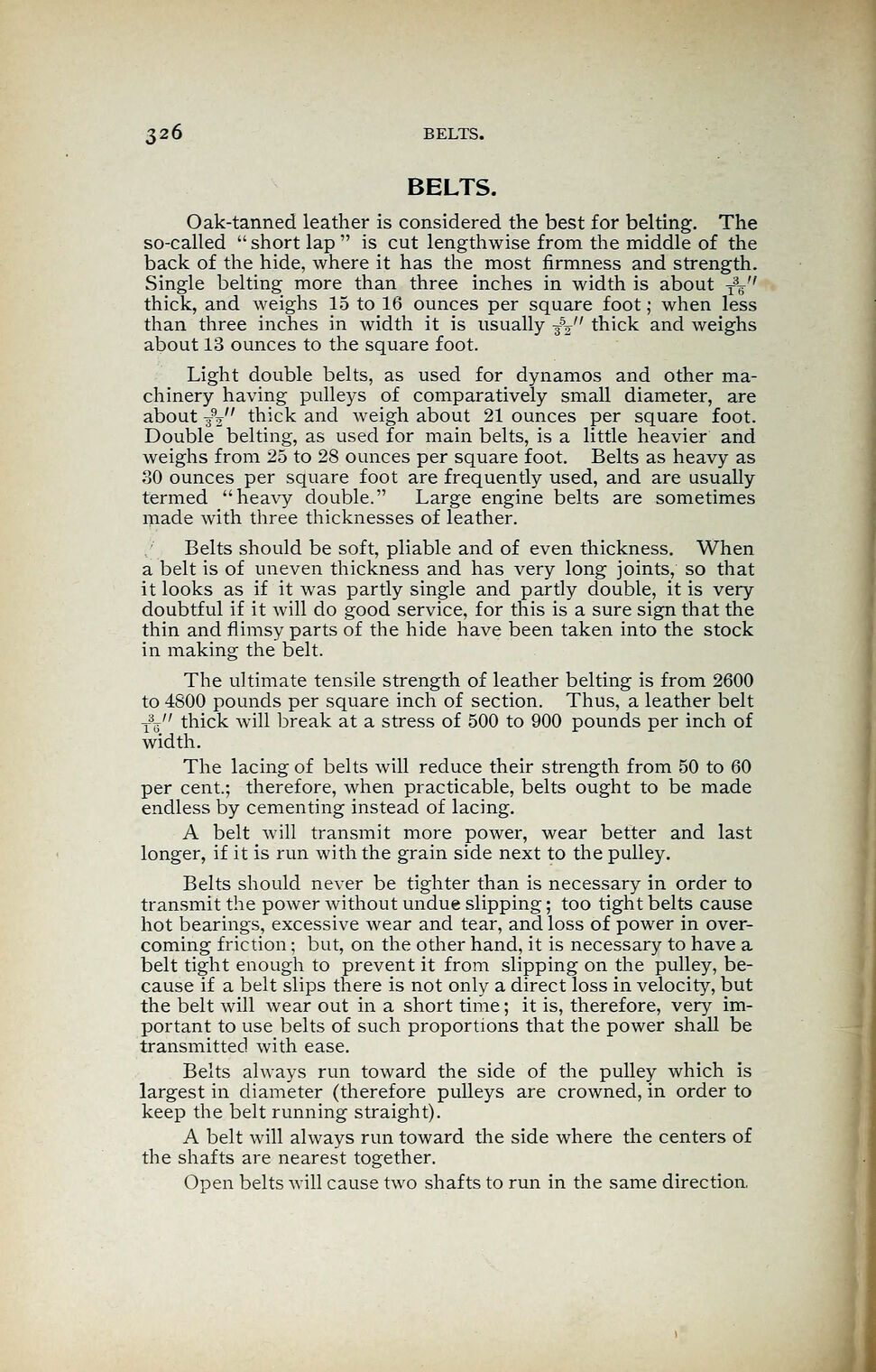
Full resolution (JPEG) - On this page / på denna sida - Belts

<< prev. page << föreg. sida << >> nästa sida >> next page >>
Below is the raw OCR text
from the above scanned image.
Do you see an error? Proofread the page now!
Här nedan syns maskintolkade texten från faksimilbilden ovan.
Ser du något fel? Korrekturläs sidan nu!
This page has never been proofread. / Denna sida har aldrig korrekturlästs.
326 BELTS.
BELTS.
Oak-tanned leather is considered the best for belting. The
so-called " short lap " is cut lengthwise from the middle of the
back of the hide, where it has the most firmness and strength.
Single belting more than three inches in width is about Ty
thick, and weighs 15 to 16 ounces per square foot; when less
than three inches in width it is usually f’j" thick and weighs
about 13 ounces to the square foot.
Light double belts, as used for dynamos and other ma-
chinery having pulleys of comparatively small diameter, are
about ¥V;
thick and weigh about 21 ounces per square foot.
Double belting, as used for main belts, is a little heavier and
weighs from 25 to 28 ounces per square foot. Belts as heavy as
30 ounces per square foot are frequently used, and are usually
termed "heavy double." Large engine belts are sometimes
made with three thicknesses of leather.
Belts should be soft, pliable and of even thickness. When
a belt is of uneven thickness and has very long joints, so that
it looks as if it was partly single and partly double, it is very
doubtful if it will do good service, for this is a sure sign that the
thin and flimsy parts of the hide have been taken into the stock
in making the belt.
The ultimate tensile strength of leather belting is from 2600
to 4800 pounds per square inch of section. Thus, a leather belt
Ty thick will break at a stress of 500 to 900 pounds per inch of
width.
The lacing of belts will reduce their strength from 50 to 60
per cent.; therefore, when practicable, belts ought to be made
endless by cementing instead of lacing.
A belt will transmit more power, wear better and last
longer, if it is run with the grain side next to the pulley.
Belts should never be tighter than is necessary in order to
transmit the power without undue slipping ; too tight belts cause
hot bearings, excessive wear and tear, and loss of power in over-
coming friction ; but, on the other hand, it is necessary to have a
belt tight enough to prevent it from slipping on the pulley, be-
cause if a belt slips there is not only a direct loss in velocity, but
the belt will wear out in a short time ; it is, therefore, very im-
portant to use belts of such proportions that the power shall be
transmitted with ease.
Belts always run toward the side of the pulley which is
largest in diameter (therefore pulleys are crowned, in order to
keep the belt running straight).
A belt will always run toward the side where the centers of
the shafts are nearest together.
Open belts will cause two shafts to run in the same direction.
<< prev. page << föreg. sida << >> nästa sida >> next page >>